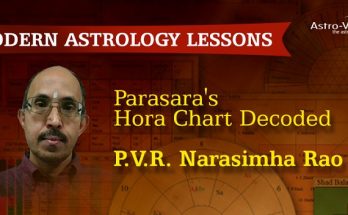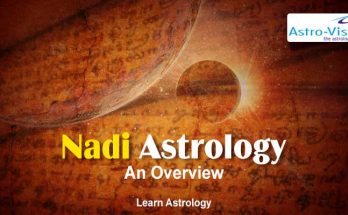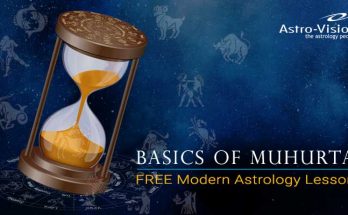Abhijit Nakshatra
The Moon has 27 wives; they are the daughters of Daksha Prajapathi and wife Panchajani (Virani). These 27 sisters had one brother and that brother is Abhijit Nakshatra. Abhijit Nakshatra begins from the last quarter of Uttarashada and ends at the first 1/15th segment of Shravana. Abhijit is the Sanskrit name for Vega, the brightest star in the northern constellation of Lyra.
A Complete Astrology Guidance at Your Fingertips!!!
Get it on PlayStore – INSTALL NOW
Surya Prajnapti mentions that the winter solstice (Makara Sankranthi) begins when the Sun and Moon were in conjunction with the first point of Abhijit Nakshatra: that particular point of the elliptic which was 177:55:10 degrees east of the star “Zeta Piscium” and that the five-year cycle of the Vedic Calendar was then taken to commence from that period.
The only time Abhijit is used is for Muhurta. Abhijit (Lorded by Mahavishnu) indicates the direction in which the Sun (i.e. solar system) is precessing in the universe and in Krishna marga Shri B V Raman says Abhijit Nakshatra faces west. Hence, it represents the eye. (Chakshyur) of the zodiac. Aratus, a Greek Astronomer, opined that Hercules (derived from Hari-Kulesa i.e. Vishnu) the celestial constellation was a stranger. Hercules Greek name is supposed to be Abhijit. Vishnu Gayatri teaches that the Sun’s, the signification of the individual soul (Microcosm) universal goal of and is constantly moving towards the Creator and the Universal Soul (Macrocosm).
Abhijit means “Victorious” or “the one who cannot be defeated”. In Bhagavad Geeta, Krishna said that He was Shiva among Rudras; He was Arjuna among Pandava and He was Abhijit among Nakshatra Classical Vedic texts mention Abhijit as one of the most auspicious time for doing any auspicious activity excepting travelling to the southern direction. Its deity is Lord Brahma. Some Vedic texts also mention that 28 minutes before and 28 minutes after midnight clock (a.m. and p.m. both) is called Abhijit Muhurtah too.
Various researches were done about the existence of Abhijit Nakshatra. This Nakshatra is present in ancient Vedic literature but is not seen in those texts after the Vedic period. However, as per the present association of stars with these Nakshatras, several of them are as far as 25º away from the ecliptic whereas Moon travels only about 5º on either side of the ecliptic. A research was done by 2 Tata Institute of Fundamental Research, Mumbai claims that after studying the sky pattern of 3500 BC to 2005 AD they identified that Moon’s path was closest to the maximum number of Nakshatras around 3000 BC. Abhijit Nakshatra could have been a supernova that existed during that time.
Yajur Veda and Atharvana Veda both mention Abhijit as a Nakshatra after Uttara Ashadha and before Shravana.
Maharshi Vyas has recorded in Mahabharat, Vana Parva (Chap.230, Verses 8-11), a dialogue between Indra and Skanda wherein it is stated that:
“Contesting against Abhijit (Vega), the constellation Krittika (Pleiades) went to ‘Vana’ the Summer Solstice to heat the summer. Then the star Abhijit slipped down in the sky. At that time, Dhanishta was given the first place in the list of Nakshatras. Rohini was also the first some time back. Now you decide what to do.” said Indra.
This dialogue shows that when Indra went to Summer Solstice, Vega started falling. Many scholars have ridiculed this idea of Star Falling; but now it is proved by modern astronomy that it was a fact that 12,000 years B.C., Vega slide down to the horizon from the heights of the sky, to become a pole star.
Between 21,800 and 20,840 years B.C Krittikas were at the Summer Solstice. Maharshi Vyas has recorded in Mahabharat, Vana Parva (Chap.230, Verses 8-11), a dialogue between Indra and Skanda where-in it is stated that, Contesting against Abhijit (Vega), the constellation Krittika Pliedes) went to “Vana” the Summer Solstice to heat the summer. Then the star Abhijit slipped down in the sky. At that time Dhanishta was given the first place in the list of Nakshatras. Rohini was also the first some time back. Now you decide what to do,” said Indra.
This dialogue shows that when Indra went to Summer Solstice, Vega started falling.
Courtesy: Modern Astrology









Hi. I would like to know what is the significance of features associated with a person’s birth under Abhijit Nakshatra?